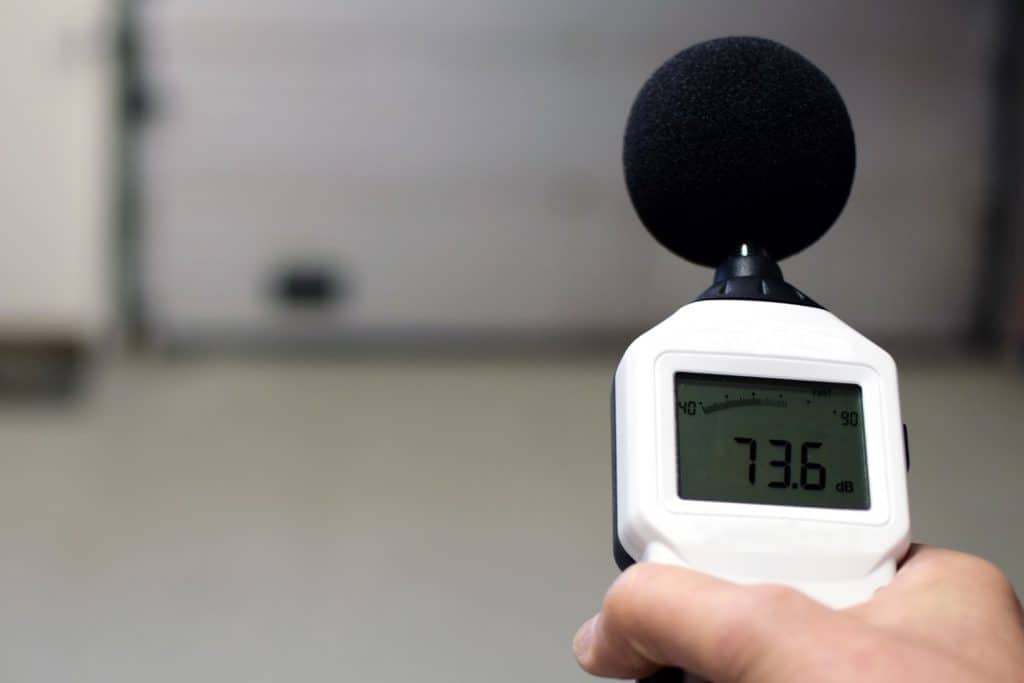Occupational Noise Assessment
Where a potential noise hazard has been identified, the Code of Practice for Managing Noise and Preventing Hearing Loss at Work states that an employer (or person conducting a business or undertaking) should evaluate the risk by carrying out a noise assessment.
It might not always be necessary for the actual noise level to be quantified with specialised sound-measuring equipment, particularly if the source of a potential noise hazard at your workplace or site is readily identifiable – for example, if there is only one machine in operation and you have manufacturing data which specifies that machine’s noise output level – and you’re immediately able to suitably manage your employees’ exposure to that noise.
However, where your workplace or site has several potential noise hazards, or you’ve completed the Noise Hazard Identification Checklist (Appendix C of the Code of Practice for Managing Noise and Preventing Hearing Loss at Work) and determined that the noise hazard in your workplace may be a significant issue, it’s advisable to have a qualified, experienced and competent person perform a thorough noise assessment using specialised measuring instruments, enabling you to properly assess and manage the risks.
Prioritizing Hearing Health in the Workplace
At Hayden Health and Safety, we offer extensive occupational noise assessment services, tailored to protect your employees’ hearing and ensure compliance with industry standards. Our proficient technicians use advanced equipment to measure workplace noise levels accurately, providing thorough reports and actionable recommendations to reduce the risk of hearing impairment.
Regulatory Compliance and Noise Exposure Standards:
In line with the Work Health and Safety Regulations 2011 and the NSW Code of Practice for Managing Noise and Preventing Hearing Loss at Work, we help you maintain noise levels within safe limits. The standard limits are an average of 85 decibels (dBA) over an eight-hour day, and a peak of 140 decibels (dBC).
Our services adhere to Australian Standards AS/NZS 1269.1:2005 and AS/NZS 1269.2:2005, ensuring your business meets all regulatory requirements.

Recommended Frequency for Noise Assessments
- Baseline Noise Assessments: Essential for establishing initial noise exposure levels, ideally conducted at the start of employment or before exposure begins.
- Routine Noise Monitoring: Regular assessments based on the nature of work, potential exposure, and previous assessment results, recommended at least every five years.
- Personal Noise Exposure Monitoring: Individual assessments using personal dosimeters to track exposure over time.
- Task-Based Noise Assessments: Focused evaluations of specific tasks to pinpoint major noise sources and evaluate control measures.
- Area Noise Assessments: Spot checks in various workplace locations to identify areas exceeding noise standards and evaluate control measures.
For high-risk environments or employees with a history of hearing issues, more frequent assessments may be needed.
Customized Noise Control and Hearing Conservation Programs
We provide detailed analysis and collaborate with you to create tailored noise control and hearing conservation strategies, addressing your business’s unique challenges and needs.
Creating a Safer, Healthier Workplace
Our occupational noise assessment services are integral to fostering a safer and healthier work environment.
Contact us to learn more about how we can assist in protecting your employees’ hearing and ensuring compliance with relevant industry regulations.